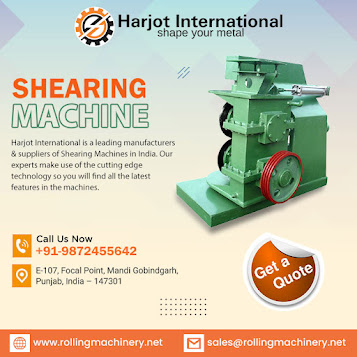Shearing Machine: Its Working Process And Classification

If you want to buy an industrial Shearing Machine to grow your business, then first you should have information and understanding about it. Many individuals are not aware of the fundamentals and different types of sheet metal shear machines. This blog discusses the shearing device in detail, including its working process, and much more. So, keep on reading to learn further! What is a Shearing Machine? A shear machine applies shearing force to metal sheets of varying thicknesses by using a reasonable blade gap to cause the sheets to break and divide according to the desired size. This machine has an upper blade that moves and a stationary bottom blade. Furthermore, Shearing Machine Manufacturers in India made this equipment primarily for application in the metal processing sector. The products are widely utilized in a variety of sectors, including aviation, light industry, metallurgy, chemical industry, construction, shipbuilding, automotive, e...





